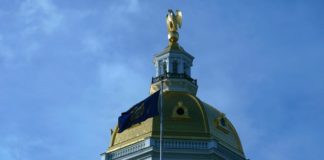By Eve Kirman
Throughout recorded history it has been known that some people, and animals, are attracted to more than one gender. Specific labels that refer to this attraction, however, are relatively new. In fact, it wasn’t until the latter years of the 1970s that the term ‘bisexual’ was used in the context of which we use it today. Bisexuality can be defined as the romantic or sexual attraction to multiple genders – it is important that this definition is used rather than one that would reinforce a gender binary as I believe this is an outdated view.
In a recent annual survey (2020) by the Office for National Statistics, it was found that one in ten young women in the UK identify as lesbian, gay, bisexual or other. Specifically, this is 11.4% of the female population that are aged 16-24. This is a large increase when compared to the 2014 survey that found only 3.1% of young women to identify in this way. These findings indicate a growing openness among young people in regard to their sexual orientation. This could be attributed to an ever-increasing comfortable environment provided for young people by the likes of media representation and visibility.
Pride events, such as Gay Pride – which normally takes place around about now in June, are grounded in the celebration and promotion of equality, visibility and self-affirmation within the LGBTQ+ community. However, for bi-identifying individuals like myself, part of this celebration involves demonstrating or even proving that our identity is valid. This is due to the existence of bi-erasure in society.
As a biology student, I have often wondered about what drives the relationship between science and sexuality
Bisexual erasure is the historical and current tendency to ignore or falsify instances of bisexuality. As an extreme, it is the disbelief in bisexuality entirely. It is often founded on the misunderstanding that bisexual people are confused and unable to ‘choose a side’. Specifically, that bisexual men are ‘really just closeted homosexuals’ and that bisexual women are just ‘looking for attention’. Dr Feinstein, an associate professor of psychology in Chicago, told Health that “for some people, it’s hard to get their heads around this idea that sexual orientation doesn’t have to be either-or, that it’s not only being attracted to people of the same gender or of people of another gender, but that you could be attracted to more than one different type of person.”
As a biology student, I have often wondered about what drives the relationship between science and sexuality. However, this notion may not be entirely progressive for the LGBTQ+ community.
A study from 2019 by Andrea Ganna, a geneticist at MIT and Harvard, looked at the genetic basis of human sexuality in around 500,000 individuals via genome-wide association. It concluded there is no specific ‘gay gene’, however there are five regions of the human genome that could be attributed to same-sex attraction. This, helpfully, propagates the narrative that is often misunderstood by some that sexuality is not a choice.
Sadly, however, some science has fed into this narrative – with studies looking to try and prove that bi people exist rather than a biochemical or genetic justification for the difference between individuals. A 2020 study by Jabbour et al. titled “Robust evidence for bisexual orientation among men” faced controversy for fundamentally “proving” the existence of bisexuality in men.
While the science behind this study is valid, I believe that the rationale for the paper was rooted in bi-erasure. For example, the first line reads “there has long been scepticism among both scientists and laypersons that male bisexual orientation exists” – which is obviously deeply harmful to men who identify in this way. The bottom line is that it is absurd to have to have scientists prove your own identify for you.
That being said, there is good that more research into bisexuality can do for the queer community. Despite the science behind sexuality still being somewhat of a question mark, by better understanding it we can better understand the way in which it shapes people’s lives. All in all, sexuality is always something that should be celebrated, and thus current science should be looking to empower individuals rather than question them.
Image: Delia Giandeini via Unsplash









